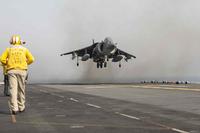Friday afternoon seems like the right time to write this post.
The Air Force is notorious for picking Friday afternoons to hold a press conference to announce a scandal or a prominent contract protest in hopes that few journalists will attend, or the news will disappear into the poorly read Saturday newspapers. Here's a hint for the Air Force press desk. This strategy is backfiring. Journalists covering the Air Force make sure to attend any press conference held on a Friday.
So let's reverse that trend and highlight a report that found the Air Force's acquisition branch might not be as troubled as the recent spate of contract protests might suggest. Or, maybe it's all relative and the Air Force is simply less screwed up than it was 17 years ago, but still needs to get its act together.
The Air Force asked RAND's Project Air Force team to investigate if it did in fact have a problem with too many protests. RAND researchers found the Air Force issued 133,000 contracts between 2000 and 2008. Defense companies protested 836 of those contracts. Air Force officials offered corrective actions for 33 percent of those protests and the Government Accountability Office sustained only 3 percent, or 29, of those protests.
Unfortunately for Air Force leadership, one of those 29 sustained protests happened to be Boeing's 2008 protest of the $35 billion tanker contract awarded to Northrop Grumman and EADS. Congress held one hearing after another as U.S. Sen. John McCain, R-Ariz., publicly railed against the Air Force and its acquisition failings. At one point, the Pentagon stepped in and took the tanker decision away from the Air Force, before eventually returning it to Air Force control.
Turns out though, the Air Force is receiving a smaller percentage of protests than it was in 1995. The percentage dropped from 1.7 percent of all contract awards in 1995 to 0.5 percent in 2008, according to RAND's report, published earlier this year. So few protests are sustained "that it is impossible to discern any meaningful trend from them," the report said.
Authors of the report expect the decline in protests to continue. The rate of protests has annually declined by 8 percent and 9 percent, RAND reported.
The Air Force does issue corrective actions with relative regularity. In the 1990s,the Air Force offered corrective actions in 0.3 percent for each contract awarded. However, the percentage of corrective actions has "steadily declined" from 2000 to 2008 to where 0.2 percent of contract awards received corrective actions, according to RAND's report.
"On the whole, all of these trends point to improvement over time," read the report.
So kudos to the airmen on the Air Force contracting teams. That felt good. The Air Force press corps doesn't typically get to write something positive on a Friday afternoon.








